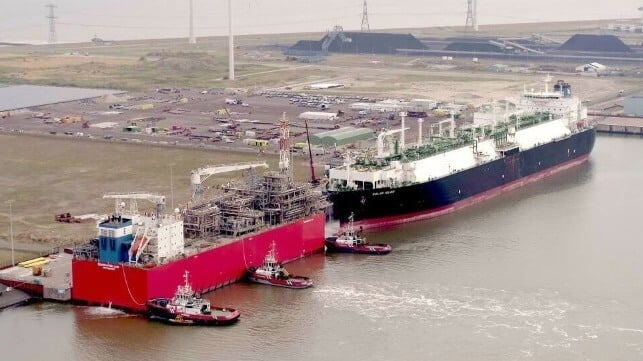Analysis: EU's LNG Supply Won't Fully Offset Loss of Russian Gas

Energy utilities in Northern Europe are moving fast to install new LNG import capacity, and they're taking advantage of the rapid scale-up capability of floating storage and regasification units (FSRUs), special LNG carriers fitted regas equipment. A twin FSRU terminal is already up and running in Eemshaven, and three more will likely be live by January, according to EnergyIntelligence. But will there be enough liquefied gas available on the market to feed them all? It may be tight, according to the analysts at LNG specialist Poten Partners.
Europe has soaked up most of the world's LNG spot cargoes in recent months, helped along by falling demand in more price-sensitive Asian markets. Poten expects that EU buyers will remain dependent on the spot market, not long-term contracts, and this could limit its ability to use LNG to fill the gap left by Russian pipeline supplies. Before the war, the EU imported about 110 million metric tonnes of gas per year (MMt/y) via pipeline, and Poten predicts that the most that European importers can hope to replace with LNG is about 60 MMt/y. Conservation measures will take care of another 20-25 MMt/y, but that still leaves a substantial gap - unless EU markets accept some amount of Russian supply.
This has implications for Europe's ability to fill storage for the 2023-4 winter. Thanks to a concerted conservation effort, consumer demand destruction due to high prices, and a mild fall heating season, the EU has managed to fill up its gas storage facilities to a much higher level than expected. That luck may not hold next summer, when Asian buyers will likely return to the market in force. Southeast Asia and South Asia are set to drive LNG demand growth over the next decade, despite the booming import business in Europe, and the region will compete directly with Europe (though it will generally remain price-sensitive), Poten predicts.
"Southeast Asian demand will triple over the next decade, and South Asian demand will about double," said Poten head of business intelligence Jason Feer in a webcast Wednesday.
Russian gas might be part of the solution. The Nord Stream 1 and 2 subsea pipelines are off the table after the attack in October, but there are other routes. Gas continues to flow through the TurkStream pipeline at full rate, supplying southeast Europe. This is a steady supply of EU-bound gas that does not have to be replaced with LNG.
Russian gas is also heading into Western Europe in the form of LNG. According to senior analyst Piers de Wilde, about 10 extra cargoes of LNG from the Yamal plant in the Siberian Arctic headed west to Europe instead of east into Asia this navigation season.
